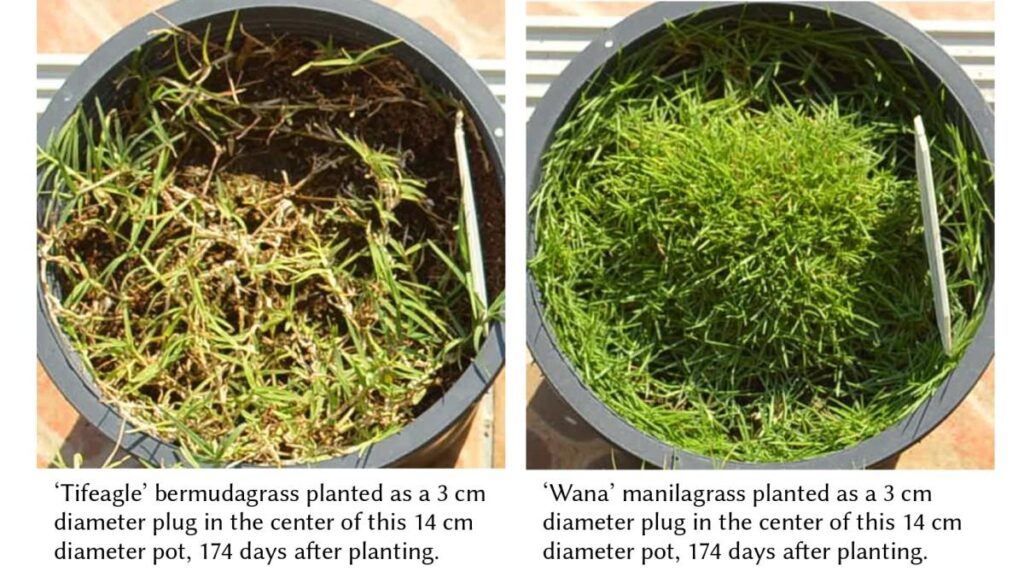
The lush green carpet we call a lawn is more than just an aesthetic delight; it’s a complex ecosystem teeming with life. But have you ever wondered how long individual blades of grass actually live? The answer, like many things in nature, isn’t straightforward. While the lifespan of grass varies depending on several factors, understanding its growth cycle and the influences that affect it can help us cultivate healthier and more vibrant lawns.
This article delves into the fascinating world of grass lifespans, exploring the various types of grass, the environmental factors that shape their longevity, and practical tips for maintaining a thriving lawn. From the initial germination to the eventual shedding of old blades, we’ll uncover the secrets behind the continuous renewal of our grassy landscapes.
Grass Lifespan
The lifespan of individual grass blades is surprisingly short, typically ranging from 1 to 3 months. This rapid turnover rate is essential for the overall health and resilience of the lawn. As new blades emerge from the base, older ones gradually die off, providing nutrients back into the soil and creating space for fresh growth.
However, it’s important to remember that this refers to individual blades, not the entire grass plant. The root system of a grass plant can live for several years, even decades in some cases. This persistent root network continuously produces new shoots, ensuring the lawn’s continuous renewal and ability to withstand wear and tear.
Factors Affecting Grass Longevity
Several environmental factors play a crucial role in determining the lifespan of individual grass blades and the overall health of the lawn.
Climate
Temperature and rainfall patterns significantly influence grass growth and longevity. Warm temperatures and adequate moisture promote rapid growth, while extreme heat or drought can stress the plants, shortening their lifespans. Conversely, cold weather can induce dormancy, slowing down growth and extending the lifespan of existing blades.
Sunlight Exposure
Grass requires sunlight for photosynthesis, the process that fuels its growth. While most grass types thrive in full sun (6-8 hours per day), some varieties tolerate partial shade. Insufficient sunlight can weaken the plants, making them more susceptible to disease and reducing their lifespan.
Mowing Frequency
Regular mowing is essential for maintaining a healthy lawn, but excessive cutting can stress the grass and shorten its lifespan. Mow at the appropriate height for your grass type, typically removing no more than one-third of the blade length in each mowing session.
Types of Grass and Their Lifespans
Different types of grass have varying lifespans due to their genetic makeup and environmental adaptations.
Cool-Season Grasses
These grasses thrive in cooler climates with moderate rainfall. Examples include Kentucky bluegrass, fescue, and ryegrass. They typically live for 3-5 years but can persist longer with proper care.
Warm-Season Grasses
These grasses prefer warmer temperatures and full sun. Examples include Bermuda grass, zoysia grass, and St. Augustine grass. They generally have a lifespan of 5-10 years, sometimes even longer in ideal conditions.
Grass Growth Cycle
Understanding the grass growth cycle is crucial for effective lawn management.
Germination
The process begins with seed germination, where the tiny embryo within the seed sprouts and develops roots and shoots. This stage can take several weeks depending on factors like temperature and moisture.
Vegetative Growth
Once established, the grass plant enters a period of rapid vegetative growth, producing new leaves and expanding its root system. This is the phase when the lawn appears lush and green.
Flowering and Seed Production
During the flowering stage, the grass plant produces flowers that eventually develop into seeds. This process requires specific environmental conditions and often occurs in late summer or early fall.
Dormancy
As temperatures drop in colder climates, many grasses enter a dormant period, slowing down their growth and conserving energy. This allows them to survive harsh winter conditions.
Maintaining a Healthy Lawn
A healthy lawn is more resilient to stress and disease, leading to longer-lasting grass blades.
Proper Watering
Water deeply and infrequently, allowing the soil to dry slightly between waterings. This encourages deep root growth, making the grass more drought-tolerant.
Fertilization
Regular fertilization provides essential nutrients for healthy growth. Choose a fertilizer formulated for your specific grass type and follow application instructions carefully.
Weed Control
Weeds compete with grass for resources, weakening the lawn. Implement effective weed control strategies to prevent their establishment and spread.
Conclusion
The lifespan of how long does grass live is a fascinating aspect of lawn care. Understanding the factors that influence grass longevity allows us to cultivate thriving lawns that provide beauty and functionality for years to come. By implementing proper maintenance practices, we can ensure our grassy landscapes remain vibrant and resilient, providing a welcoming green space for generations to enjoy.
